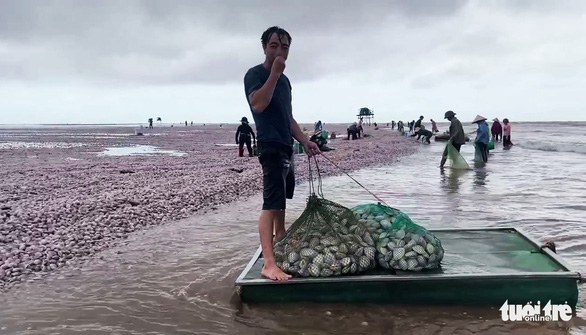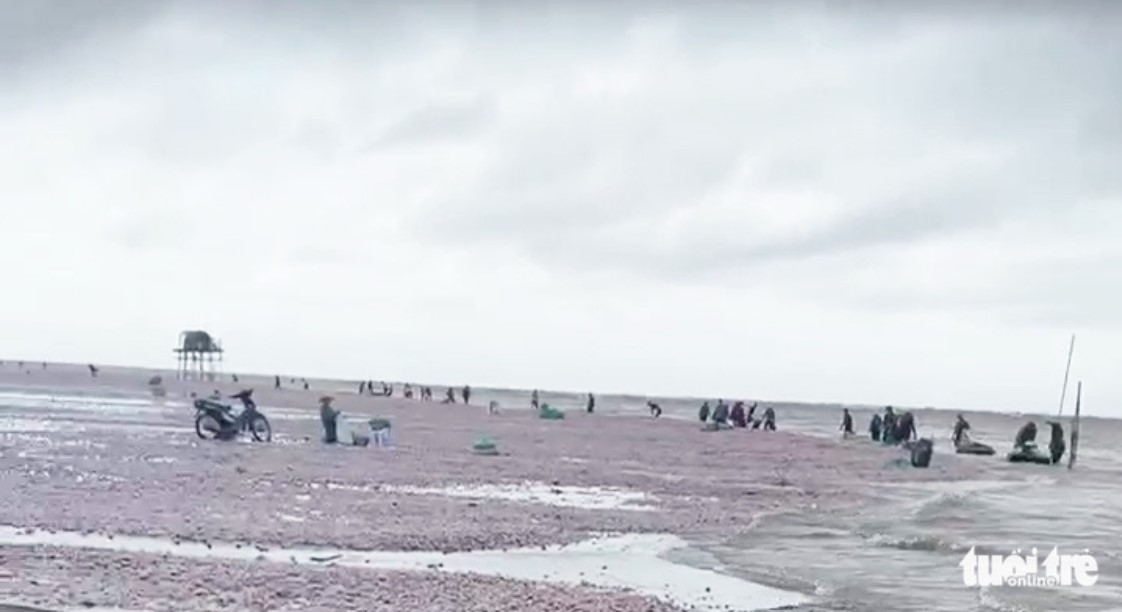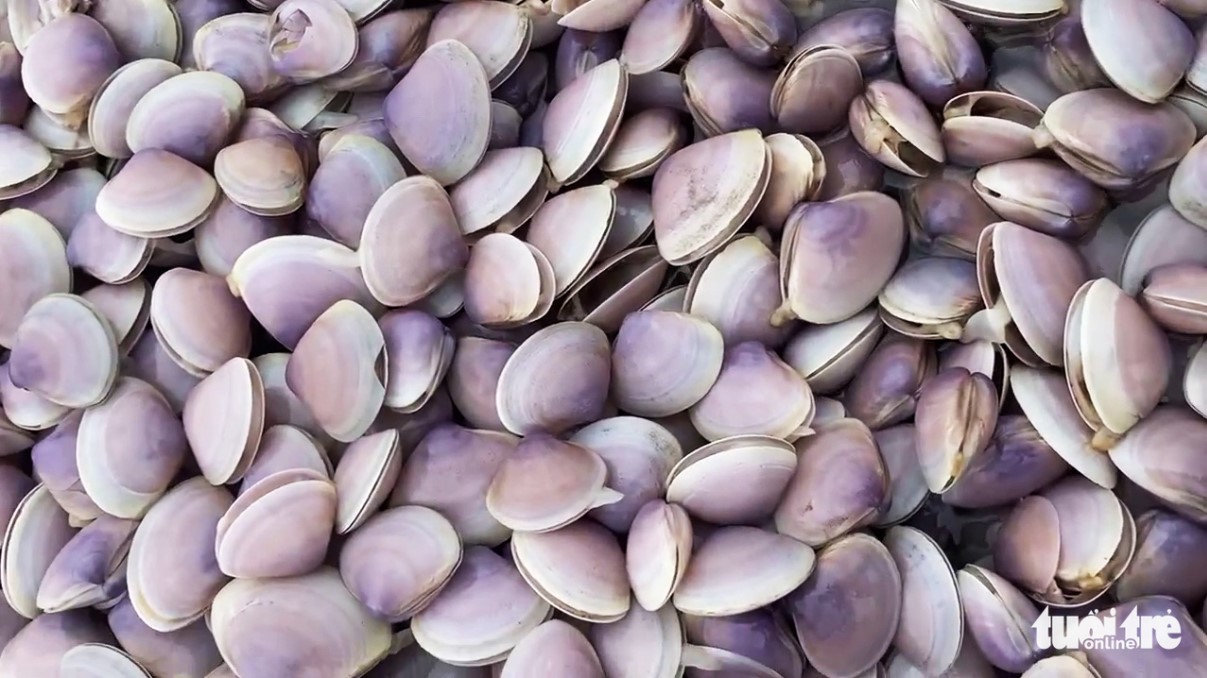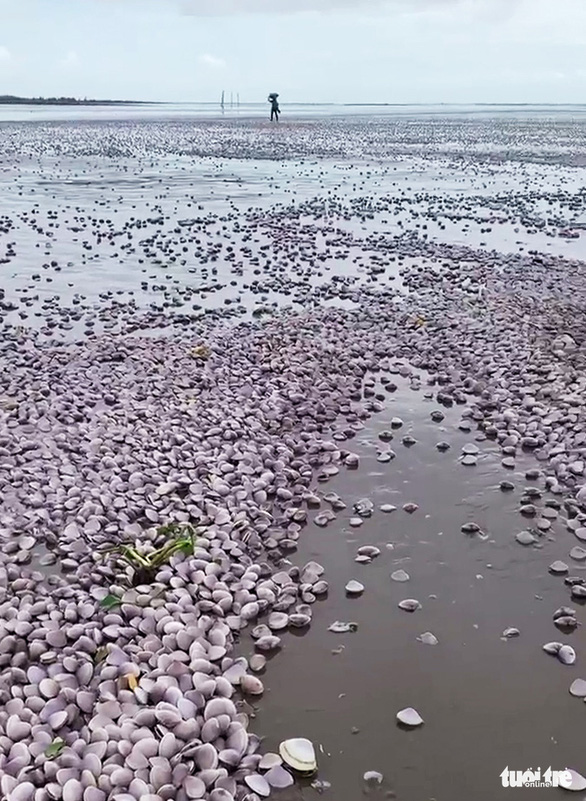An extremely rare phenomenon occurred in Nam Dinh Province, northern Vietnam when dozens of tonnes of clams were pushed ashore by strong waves last week.
Many locals who knew about this phenomenon rushed to the area to get what they called a 'gift from heaven.'
On Thursday last week, hundreds of people flocked to an alluvial ground at Con Lu in Giao Thuy District, Nam Dinh Province to collect clams.
Here, locals estimated that dozens of tonnes of clams were washed to shore by the waves.
Picking up some live clams in the sand, Phung Thi Nhan, a local resident, said excitedly that although Storm No. 4, known internationally as Typhoon Noru, did not affect her province, it brought many 'gifts from heaven.'
"I have collected almost three bags of shells since this morning," the woman said.
"I do not understand why so many clams washed up on the shore."
|
|
| Local people rush to the alluvial land of Con Lu in Nam Dinh Province, northern Vietnam to collect washed-up shells, September 29, 2022. Photo: K. Linh / Tuoi Tre |
Mai Van Chuyen, one of the clam collectors, said his grandparents told him that clams could be washed ashore by waves after storms.
"But we have not seen anything like this in a long time," Chuyen told Tuoi Tre (Youth) newspaper.
"When I came here, I saw that hundreds of people had gathered to collect shells.
"I collected a bag because most of the clams were dead, so I had to choose live ones.
"These are clams with thin shells, which are very tasty."
|
|
| Although dozens of tonnes of clams washed ashore in Nam Dinh Province, northern Vietnam, most of them died. Photo: K. Linh / Tuoi Tre |
Speaking to Tuoi Tre, Tran Quang Hung, head of the bureau of agriculture and rural development of Giao Thuy District, said the clams washing up ashore is an extremely rare natural phenomenon.
According to Hung, at around 6:00 am that day, many white mussels appeared at the end of the Con Lu alluvial plain, washed ashore in surprisingly large numbers.
In some places, as many as several dozen meters of shoreline were covered with white shells.
Hung added that most of the small clams died while the larger ones survived big waves, so locals selected live clams for consumption or sale.
"We estimate that more than 30 tonnes of clams were washed ashore by the waves," Hung said.
Some experienced seafarers believe that such a phenomenon is not so rare. However, they have not seen such an enormous number of shells for many years.
The mussels that washed ashore this time are called 'ngao bong' (literally 'cotton mussels') by the locals.
This type of clam has a shell color of a mixture of purple and white and is difficult to catch under normal conditions.
|
|
| Many shells can be seen washed ashore in an alluvial area of Con Lu in Giao Thuy District, Nam Dinh Province, Vietnam. Photo: K. Linh / Tuoi Tre |
Like us on Facebook or follow us on Twitter to get the latest news about Vietnam!





















































